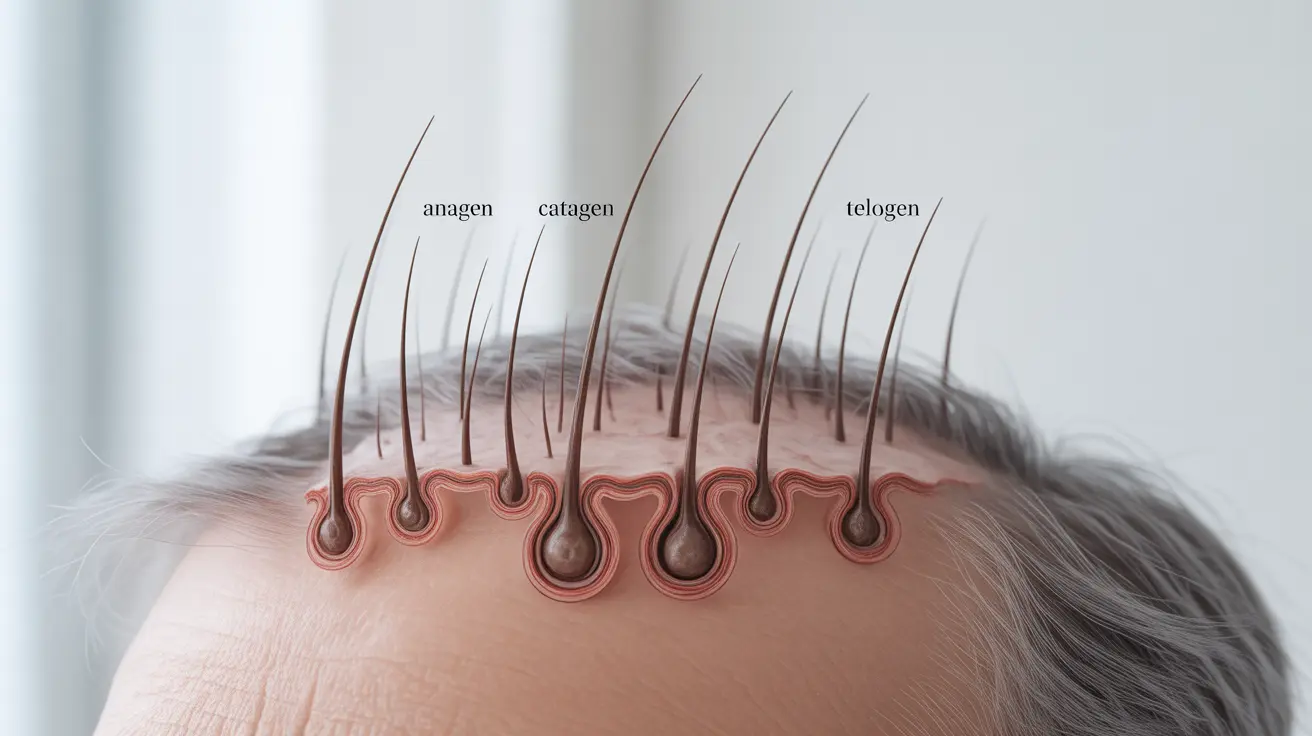Telogen effluvium in men is a temporary form of hair loss that can be both concerning and frustrating. This condition occurs when a significant number of hair follicles prematurely enter the resting (telogen) phase of the hair growth cycle, leading to increased shedding and noticeable thinning across the scalp. Understanding its causes, symptoms, and treatment options is crucial for men experiencing this type of hair loss.
While telogen effluvium can affect anyone, men often face unique challenges in identifying and addressing this condition, particularly because it can be confused with male pattern baldness. Let's explore the key aspects of telogen effluvium in men and learn how to effectively manage this temporary hair loss condition.
Common Triggers and Causes
Several factors can trigger telogen effluvium in men, causing disruption to the normal hair growth cycle:
- Severe physical stress or illness
- Major surgery or trauma
- Significant weight loss
- Medications and medical treatments
- Hormonal changes
- Chronic stress and anxiety
- Nutritional deficiencies
- Thyroid disorders
Understanding these triggers is essential for both prevention and treatment, as addressing the underlying cause is often key to recovery.
Distinguishing Features from Male Pattern Baldness
One of the most challenging aspects for men experiencing hair loss is determining whether they're dealing with telogen effluvium or male pattern baldness. Here are the key differences:
Telogen Effluvium Characteristics
- Diffuse thinning across the entire scalp
- Sudden onset (usually within 2-3 months of a triggering event)
- Temporary nature
- No specific pattern to the hair loss
- Normal-looking hairline
Male Pattern Baldness Characteristics
- Gradual onset
- Specific pattern (usually starting at temples or crown)
- Progressive nature
- Permanent without intervention
- Receding hairline
Recovery Timeline and Process
The recovery process from telogen effluvium typically follows a predictable pattern, though individual experiences may vary:
- Initial shedding phase: 2-3 months
- Peak shedding period: 4-6 months
- Beginning of recovery: 6-8 months
- Full recovery: Usually within 12 months
Understanding this timeline can help men maintain realistic expectations and reduce anxiety during the recovery process.
Treatment Approaches and Management
Several approaches can help manage telogen effluvium and support healthy hair regrowth:
Medical Interventions
- Nutritional supplements (particularly iron, biotin, and vitamin D)
- Prescription medications when appropriate
- Treatment of underlying medical conditions
Lifestyle Modifications
- Stress management techniques
- Balanced, nutrient-rich diet
- Regular exercise
- Adequate sleep
- Gentle hair care practices
Frequently Asked Questions
What are the common causes of telogen effluvium hair loss in men?
The most common causes include severe stress, nutritional deficiencies, major surgery, significant weight loss, medications, and underlying medical conditions. Physical or emotional stress often triggers the condition by disrupting the normal hair growth cycle.
How can I tell if my hair thinning is telogen effluvium or male pattern baldness?
Telogen effluvium typically causes uniform thinning across the entire scalp and occurs suddenly after a triggering event. Male pattern baldness, conversely, follows a specific pattern, usually starting at the temples or crown, and develops gradually over time.
How long does it take for hair to regrow after telogen effluvium in men?
Hair typically begins to regrow within 3-6 months after the triggering event has been addressed. Complete recovery usually occurs within 6-12 months, though this can vary depending on the underlying cause and individual factors.
What treatments or lifestyle changes help men recover from telogen effluvium?
Recovery involves addressing the underlying trigger, maintaining a nutrient-rich diet, managing stress levels, getting adequate sleep, and following proper hair care practices. Supplements and medications may be recommended by healthcare providers in some cases.
Can stress or nutritional deficiencies trigger telogen effluvium in men?
Yes, both chronic stress and nutritional deficiencies are common triggers for telogen effluvium in men. Stress management techniques and proper nutrition play crucial roles in both prevention and recovery.




